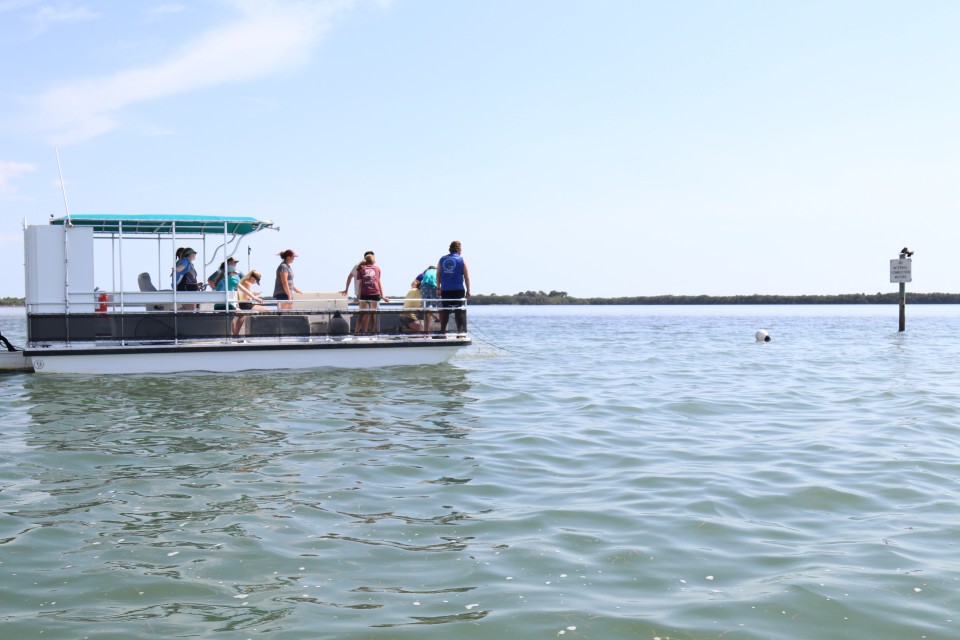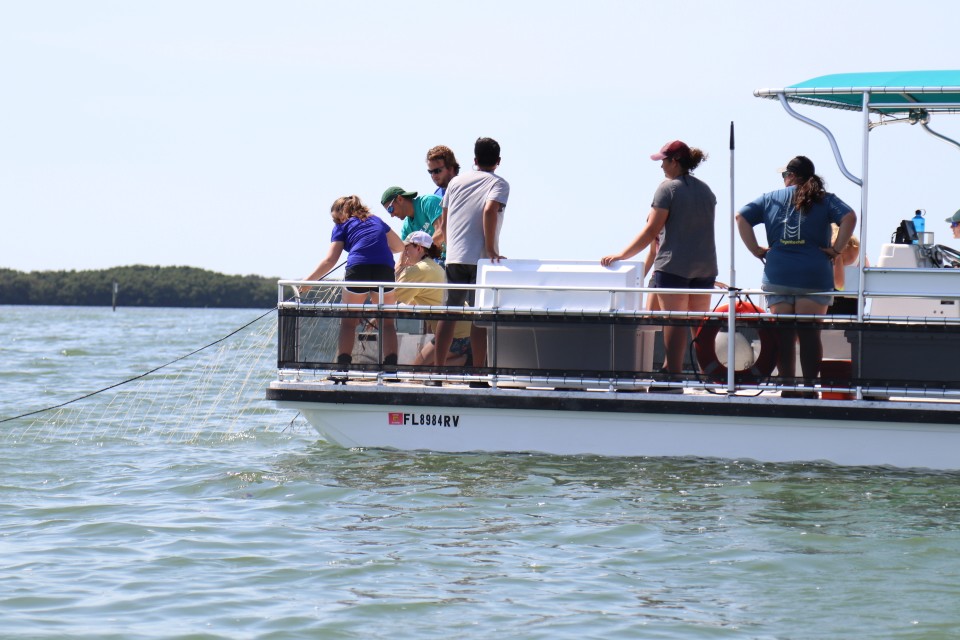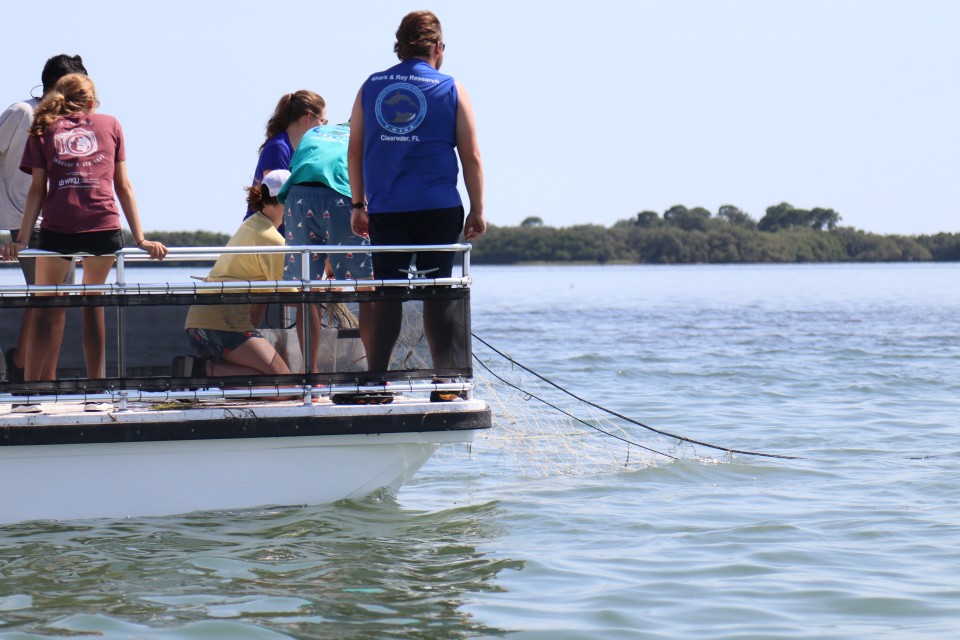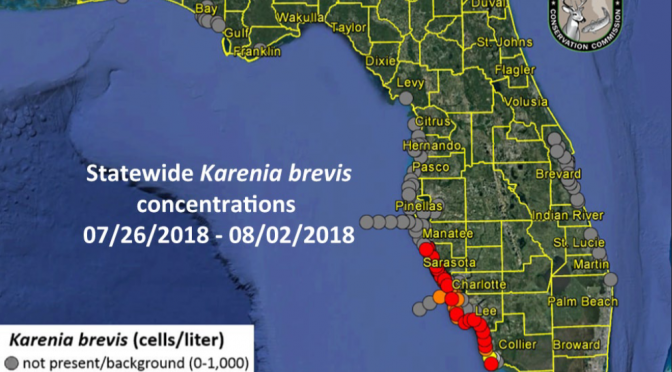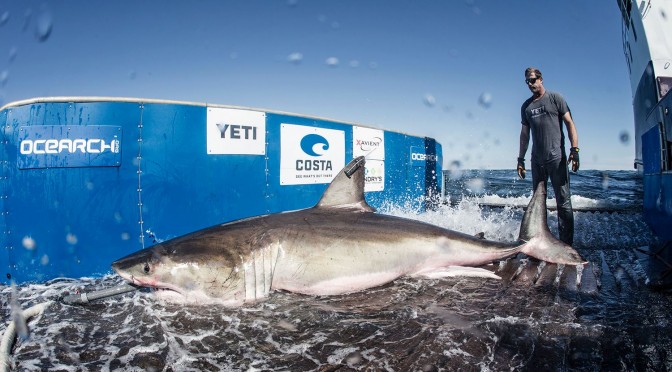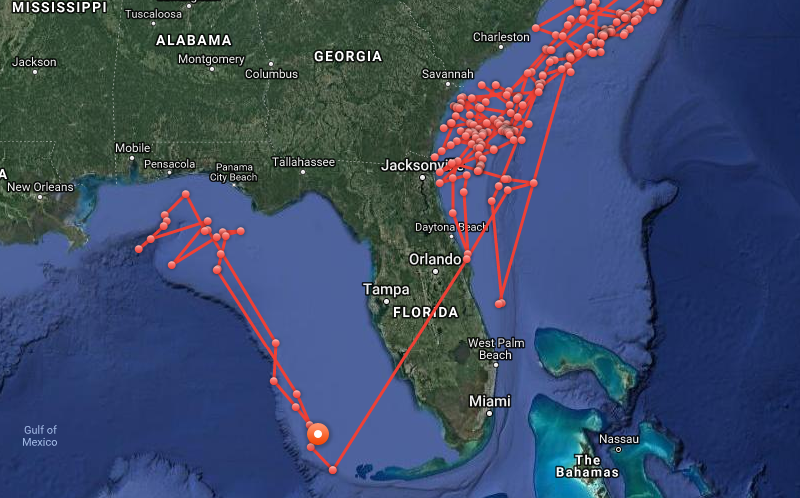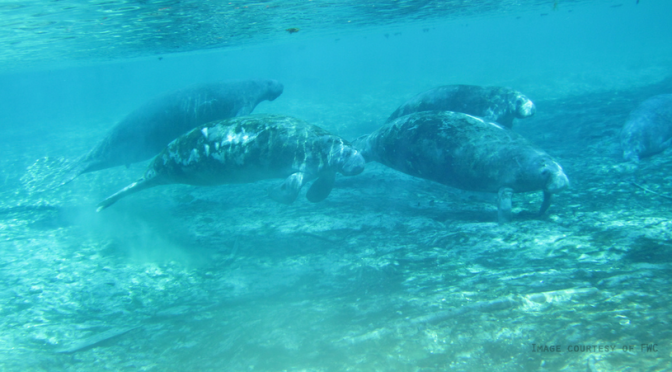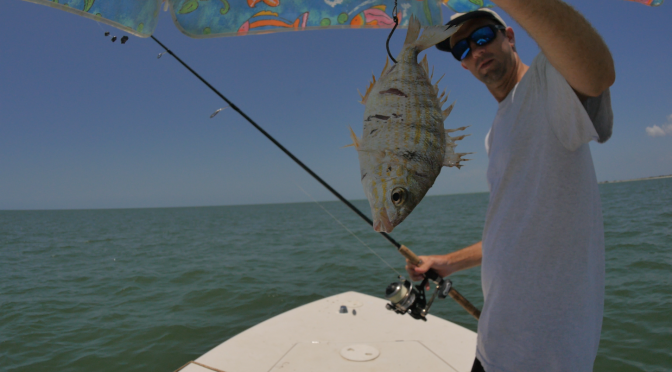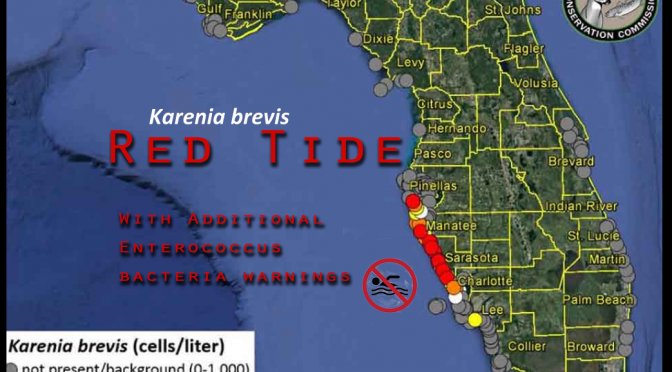The CMERA shark and ray research vessel was on the water the other day. They conduct research on sharks and rays in the area. They collect data, tag sharks, and release the fish unharmed. While they were trying to research them, I was trying to eat them. I’ve never had blacktip shark before, but I hear it’s good. Publix had it in their fresh fish area, so it must be okay. I wouldn’t mind doing some research like this. It sure is fun pulling a big shark up on the boat. They didn’t catch anything on this day. There were no low tide sharks roaming these flats for the 20 minutes they had their net in the water.
Category Archives: Research
Red Tide is Engulfing West Florida
Red tide is really bad right now in southwest Florida. According to reporting by the Florida Fish and Wildlife Commission and the University of South Florida, the concentrations of the bacteria called red tide are at high levels on the beaches. Qualitative and quantitative data from a variety of sources are being distributed by these outlets.
At the moment we’re not feeling the effects of this red tide on the northern beaches. We’re still in the dead heat of the summer, so the multiplication of the bacteria which is fueled by heat isn’t expected to slow any time soon. If this red tide does continue, and if we get a decent storm or a south flow the red tide could be sent up towards the west central Florida beaches. Any potentially significant storm is at least a week and a half out.
Reports from county officials in southwest Florida and secondary reports from Florida Fish and Wildlife officials are listing tons of red tide affected dead fish being cleared from the beaches. It’s a real mess down there right now.
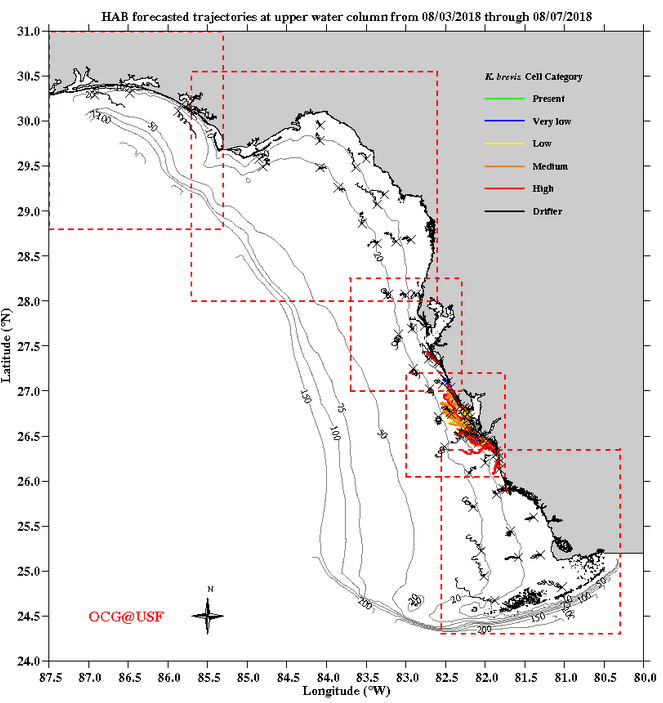
If a big storm comes into the gulf, I wouldn’t recommend a trip down to Venice. Consider that the abundance of red tide bacteria is at high levels there. Of course, it was like this last year. People still decided to make the trip down there to surf the jetties. It’s not going to kill you, but if the red tide is really intense you could find that breathing without coughing is somewhat difficult. Check out this August 3rd red tide incidence status report.
Great White Sharks in the Gulf of Mexico Spring 2018
It seems that every year we hear some “news” about how there are white sharks in the Gulf of Mexico. It’s as if the mere existence of these sharks in the Gulf is so profoundly unusual that it merits our attention. Well, it’s happening again. Two sharks that go by the name of Hilton and Yeti have been picked up by the satellite trackers attached to their dorsal region over the past couple weeks. Hilton first, in late April, then Yeti just yesterday. It’s worth mentioning that there are literally hundreds if not thousands of local sharks in your saltwater area ranging from all different sizes. 12 foot long Hilton is pictured in the featured image aboard the water platform attached to the Ocearch research vessel during his tagging. It’s actually actually quite commonplace to hear about white sharks in the gulf. Still, the recent ping from Hilton and Yeti’s satellite tags is a great opportunity to talk a little bit about sharks and their movements.
Let’s start with an analogy a fisherman once said. He was using this analogy to explain how to catch fish. It’s also a good way to understand how to find them. He said, fish are like people. Think about this, what you want to eat today may be a turkey sandwich, but tomorrow you might want a steak, and the next day maybe a salad. When talking about the food they eat, they may not always want the same thing from the same place. This subjective preference for different foods may dictate how these fish move. It certainly seems like a possibility, and definitely something the experts consider when trying make guesses about how and why these fish are moving. Food is a major driver for white shark behavior, and shark behavior in general for that matter. Food along the very fishy panhandle region of the continental shelf is a common source of sustinence for white sharks (see Hilton movement map below). Since being tagged by Ocearch Hilton has traveled 9929.312 miles between March 03, 2017 and April 2018.
When thinking locally about migratory shark behavior the local topography comes into consideration. We have an area behind Honeymoon Island State Park once described to me by a close friend as Shark Alley. It’s a trough that runs along the back side of the island that’s literally loaded with sharks. This deeper channel along the grass flat is a great transportation route for small and large sharks alike. On any given day you might spot a larger shark traveling through shark alley, and since this route is one of the more ideal routes, it’s more common to see the fish along it. Ideal routes to food, to move with the tides, or simply weather based movements are an obvious predictor of shark migration behaviors.
Questions one might ask as a researcher, questions undoubtedly left unanswered fall into a location and movement line of questioning. Do sharks have predictable patterns that they fall into? Do they have memories and are they impacted by them in a way that makes them more or less likely to return to a previous location? Some people think many fish travel along the same routes and to the same places year after year. Some people think fish just move as they wish. Do some species have preferences for certain regions of the gulf and why? Do they all have the same patterns of behaviors? Human behavior is so variable, are any fish like us? Biologists have mentioned that Dolphins are the only animals that engage in recreational intercourse. Do sharks exhibit unique human-like behaviors like this?
Correlational data are gathered and collated for many fish. It’s actually the only source of data for this kind of research. Problematic is the reality of the data, its depth and breadth. It’s hard to know exactly how many white sharks have been moving through the gulf. So we’ve got satellite tags on two of the ones in the gulf, but there could be hundreds more. We also have a hard time saying with certainty anything about why these creatures do what they do. If only they were like humans and we could just ask them, and try to trust that what they’re saying is accurate at least from their perspective. Unfortunately, sharks may be just as unpredictable and unreliable as humans.
You can read more about what Ocearch is doing on their website, watch videos, see shark info, and other related information on Ocearch.org.
Recent Decision to Reclassify the Manatee
The once sparse manatee has reached a population denisty to neccesitate the reclassification from endangered to threatened. The US Fish and Wildlife Service made the announcement on March 30th, 2017. The official decision Continue reading Recent Decision to Reclassify the Manatee
Saltwater Grass Flats Data Collection by the Keys Fisheries Research Team
Data collection like the siene collections we see here are only a small part of understanding fisheries, but still a useful tool. After fisheries data is collected, it is eventually collated into a research article or report. Over time those reports are combined to create articles that explain trends. Then, after a large amount of data is collected, a researcher may even review the reviews, so she can create something called a synthesis, a document summarizing all the findings across the summary articles. These articles and reports can then be used to guide funding related decisions. We must, of course, always consider the limitations of the data.
Shark Deterrent Wristband
Let’s start this product review by taking a look at the evidence used to show the Sharkbanz product and the claim, which is that this magnetic wristband “really works” at “deterring sharks.” A claim stated using “scientific evidence.” Continue reading Shark Deterrent Wristband
Wastewater Triggered Red Tide (K. brevis)
Red tide is engulfing the coastline after a nasty wastewater spill may have triggered an intense algal bloom. Hurricane Hermine made landfall on the northern gulf coast of Florida on September second. The repeated bouts of rain put many of the aging sewage systems into overload. Even with sewage plants purging water pre-storm, the sewage systems became overloaded. Wastewater was lost into Tampa Bay, wastewater that was quickly washed into the gulf. Wastewater can be a trigger for the naturally occurring Red Tide (K. brevis) blooms. Continue reading Wastewater Triggered Red Tide (K. brevis)
